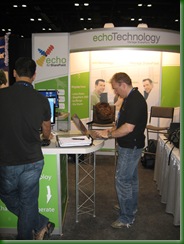This was the second in a two-part series given by Joel Oleson, Shane Young, and Mike Watson. The session was highly technical in nature and consisted of some very valuable and very specific do's and don'ts for advanced SharePoint administration.
Tip: Add command line environment variable shortcut pointing to the Office 12 Hive location on your server, since you will have to go there a lot
Site Collection & Content DB Management
Tip: Put similar sites together (based on content sizes and # of users). This can help manage functionality and configurations.
Best Practice: Separate My Sites from portals so they can be moved and managed separately.
Best Practice: Large site collections should be dedicated to a single database.
Tip: Application pools:
- 32 bit – can handle up to 1300 mb per app pool before recycle
- 64 bit - up to 6 gigs per app pool
No best practice for how many Content Databases is the right number. This is more of a management issue for the business's IT staff.
Tip: Don’t put too much content into one site collection. Try to keep DB sizes under 100 gig – rough rule of thumb
Best Practice: Database Maintenance Plan: In SQL Server, do not use default growth plan, don’t autogrow in production, and plan sizes ahead of time
Disaster Recovery can be done via Stsadm, SQL Backups, Log shipping, remote snapshots
Best Practice: When Moving Config databases: use preparetomove, then detach and reattach (otherwise you get GUID problems!)
Customization and Development
You have to have a policy for how this happens. It HAS to use features and solutions or it doesn’t make it on the server!
Best Practice: Use Code Access Security (CAS) when coding
Best Practice: Test for memory performance and disposal of objects
Best Practice: Test adding and removing solution to the farm
Tip: To see which solutions are running – go to admin/solutionstatus.aspx
Best Practice: Deploy Solutions off peak hours, because all deployments will recycle the app pool which will dump user sessions. Also be present so you can test it!
Defaults Have Faults
Server:
- Default log and app locations are not great
- Basic setup is NOT recommended since it installs SQL Express
- Having a different Application pool for every site collection is too much
- No backup is scheduled by default
Site Collections:
- No quotas, no expiration, no auditing
- No versioning, no checkout
- No approval or workflow required
- SharePoint Designer allowed for all admins and designers
Database:
- Max # of site collections is too high
- DB file location and growth plan are wrong





